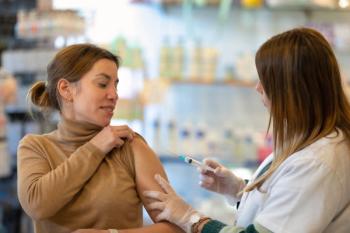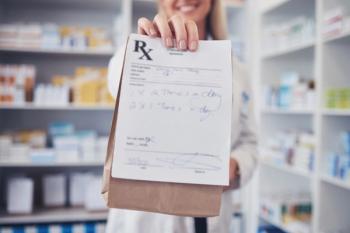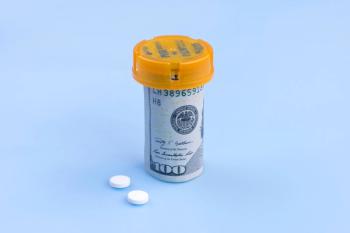
Social Media 101: A Crash Course for Community Pharmacy Owners
Community pharmacy owners wear many hats, one of which requires a marketing-savvy mindset to drive business growth. When used effectively, social media can be a viable marketing tool that can amplify your pharmacy’s online presence without a huge time commitment.
Social media can signi cantly improve patient communication, enhance the pharmacist-patient relationship and lead to better overall patient care. According to a 2017 PrescribeWellness survey, 78 percent of Americans would consider following their pharmacist on social media and 42 percent want their pharmacist to be more active on social media.1 In today’s fast-moving digital age, owners must take advantage of the opportunities that an effective social media strategy can offer.
Maybe you’re already familiar with popular social media terms like “engagement” and “reach,” or maybe your knowledge starts and ends with how to like a friend’s Facebook post. Whatever your skill level may be, using social media to break through the noise and get results in marketing a business can be a daunting task. The rst step in shaping your pharmacy’s online presence is to determine how to use each social media channel to your bene t. Not every platform will t your needs, so the optimal social channel to focus on may vary depending on the demographics and interests of your patients and customers. Although social media activity may seem like a challenge to t into an already-hectic schedule, regular social media posts don’t require a big lift.
Facebook remains the most wide-reaching platform, spanning almost all age demographics. According to PEW Research Center statistics, 68 percent of adults say they use the platform.2 Facebook is also the most frequently used social media network among this population.2
Every pharmacy should have a dedicated Facebook business page that hosts all practical information about the pharmacy, including services, location, store hours and upcoming events. Your Facebook strategy should focus on maximizing engagement among users. Engagement, a popular key performance indicator for social media, is defined as the number of times users interact with posted content. This can be measured by comments, shares, link clicks and reactions. In general, pharmacies can start by posting at least three to ve times per week and then increase to one or two posts per day. To minimize the time spent, use Facebook’s scheduling option to stagger posts to run throughout the week. This will help drive engagement while taking only 10 to 15 minutes of your time.
According to a McKesson blog post titled “Five Ways Independent Pharmacies Can Maximize Social Media,” content should generally fall into four buckets: education, fun, sharing and promotion.3 It’s important to distribute the right mix of content, with most of the posts designed to captivate your followers and offer valuable information.
Quick tips for driving engagement on Facebook
- Include imagery (photos of your pharmacy, illustrations, videos or infographics) in your posts. Engagement levels are higher for posts with images than for text-only posts.
- Craft posts in the form of a question or a call to action to help generate responses from your audience. Ask a fun question of the day, or poll your followers on which prod- ucts they’d like to see in your pharmacy.
- Keep specific patients in mind. If you have a lot of patients with diabetes who come into the pharmacy, consider posting diabetes management tips or updates on new drug approvals.
- Offer occasional contests and promotions that provide an incentive, such as a gift certicate to customers who refer a friend, to followers who engage with your pharmacy.
- Host a Facebook live video with a staff pharmacist to discuss a health topic or answer questions sent in by customers.
Twitter is a great way to communicate with users in real time, making it an effective platform for customer service. More fast paced than Facebook posts, tweets are time sensitive and have a shorter life span in the feed. Therefore, maintaining a Twitter account will require more activity and interactions with other users on the platform to stay visible.
According to PEW, 40 percent of U.S. adults who use Twitter are 18 to 29 years old, and that percentage drops as age increases.2 Twitter could be the best option for pharmacies trying to reach a younger audience.
Not only is Twitter a viable platform for communicating with customers, but it can also be an effective way to boost visibility for your business and stay up-to-date on industry trends. Follow other pharmacies, pharmacy
and health care organizations and thought leaders to keep an eye on important discussions in the space.
Because Twitter is fast moving, plan on tweeting at least three to ve times per day if you want to maintain an active presence. Look for retweets, replies and mentions as indicators of how much your followers are engaging with your account. The platform TweetDeck lets you easily schedule tweets to run throughout the day.
Quick tips for driving engagement on Twitter
- Use trending and relevant hashtags to increase the likelihood of your tweets being seen by users.
- Craft content around national initiatives (like American Pharmacist Month, National Immunization Awareness Month) using related hashtags and images.
- Engage with other users’ content by promoting community events or local businesses that may be leading health-related initiatives and retweeting/replying to relevant posts.
- Be responsive — if a customer asks a question or leaves feedback about your pharmacy, be sure to respond promptly.
- Don’t use the full 140 characters in every post. Keep your tweets brief, and use an image with each post to grab followers’ attention.
Instagram remains the most popular platform among the younger demographic. Sixty-four percent of U.S. adults 18 to 29 use Instagram.2 Still, the platform is gaining traction with older users, with 40 percent of adults between 30 and 49 reportedly using it as well.2
Since Instagram caters mostly to visuals, pharmacies that have opportunities to create image-speci c posts may be better suited to the platform. When creating an Instagram account, you should create a business account, which will unlock several features that personal accounts don’t offer, such as an analytics tool.
The time you spending updating your Instagram account can vary depending on the availability of visual content, ranging from once per week to once per day.
Quick tips for driving engagement on Instagram
- Show off images of new products in your store, and ask for audience feedback in the comments.
- Highlight special events with photos celebrating promotions, events and new services.
- Put faces to your pharmacy brand by including images of staff members with fun facts or celebrating a special achievement.
- Use the Instagram stories feature to include snapshots of new pharmacy products and services. You can also conduct polls in stories to facilitate customer feedback.
- Give your followers incentive to share their own photos at a pharmacy event or service by hosting a contest or a promotional giveaway.
So Now You’re on Social Media ... What Next?
Once you’ve settled into your social network of choice, you’re responsible for regularly serving up the content that your followers expect. Social media trends are constantly changing, so it’s important to stay connected with your audience and continually track how they’re interacting with your accounts.
Most important, adopt a voice for your social media that re ects your pharmacy. Since you’re an independent pharmacy, your connection with the community is key to distinguishing your business from major retail chains. A strong social media strategy can enhance that connection.
Newsletter
Pharmacy practice is always changing. Stay ahead of the curve with the Drug Topics newsletter and get the latest drug information, industry trends, and patient care tips.















































































































